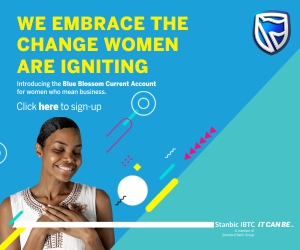GROpinion
Managing Public Communication under Buhari


By Emeka Oparah
I think one of the major un-doings of this government, which made re-election difficult, was poor communication. The government had so much going for it, but failed to publicize them proactively in pursuit of goodwill and endorsement.
You cannot light a candle and put it under the bushel. The media must survive, pay salaries and then do its work. The Public Communication arm of the FG is either cash-strapped or fund-starved. It was purely the grace of God that helped Buhari come back. I can’t imagine Atiku/PDP, considering their antecedents, giving PMB/APC such a tough challenge. It was either over-confidence or someone didn’t know his job or the president didn’t care or all of the above.
I recently listened to the Honourable Minister for Power, Housing and Works, Babatunde Fashola speak about the achievements and projects of his ministries. I was wowed by what they have done. I was more wowed by the sheer lack of information in the public space about these achievements-and I told his communication. It’s not as if they are not doing their best, but their best is simply not enough.
2023 will be worse, if things don’t change. Unfortunately, the FG-owned media do not have sufficient credibility (for obvious reasons) to tell the story of this government. Information is certainly one way of creating awareness, promoting knowledge, building understanding and enhancing goodwill.
Even before 2023, Nigerians need to know what’s going on. You may call it Propaganda, but i think it’s Information management to earn the confidence and support of the electorate. Of course, the government must continue to earn its social license and justify the mandate given to them. If you don’t communicate, then you play into the hands of the opposition and those who do not want the government to succeed or those whose favorite pastime is to criticize the government.
This is not about the austere or frugal proclivities of the president. It’s about marketing the government locally and internationally. It is actually possible Garba Shehu and Femi Adeshina are “suffering and smiling” in silence. Ditto Oga Lai Mohammed. For Mohammed, his antecedent as APC Spokesperson works severely against him, with or without budgetary allocations to his ministry. And as I said earlier, NTA, FRCN, NAN and Voice of Nigeria do not have the credibility to drive the narrative of this government-by the peculiar nature of their being government-owned.
This government needs to start talking to us-and not reacting to the opposition. Of course, it’s best to do and talk than just talk. Ighotago?


The recent activities of some individuals with one Davids Iyida attempting to sabotage the MoMo Payment Service Bank project intended to benefit, especially Enugu Ezike people, have raised significant concern and outrage within the community.


Such actions aimed at undermining a project with immense potential to uplift and empower the people of Enugu Ezike can only be described as malicious.
The MoMo PSB project is designed to bring financial services closer to the people of Enugu Ezike, facilitating easier access to banking and financial transactions.
This project is expected to create jobs, stimulate local businesses, and provide a much-needed boost to the local economy. In a region where such opportunities are rare, the MoMo PSB project represents a beacon of hope for many residents.
It is particularly baffling and disheartening to witness a member of the community collaborate with outsiders to hinder the progress of their own people.
The reasons behind such alliances remain unclear, but the impact of these actions is evident and deeply troubling. Working to obstruct the project is not only delaying progress but also actively working against the welfare and advancement of Enugu Ezike.
The efforts to destroy Kingsley Ifeanyi Adonu’s good intention, despite all the positive contributions he has made, are nothing short of wickedness.
Adonu, a visionary entrepreneur and the leading MTN Partner in the South East, has dedicated significant resources and efforts to bring the MoMo Payment Service Bank project to fruition.
His vision for the community includes economic growth, financial inclusion, and overall development. Attacking his vision is an attack on the progress and future of Enugu Ezike.
The question that lingers in the minds of many is: Why sabotaging our own benefits? In a time when unity and collective effort are paramount for the community’s advancement, such actions of sabotage are counterproductive and harmful. The community needs all hands on deck to drive development and improve the quality of life for its residents. Internal conflicts and malicious actions only serve to set back these efforts.
Despite the challenges and the malicious attempts to derail the project, it is important to reaffirm that S Mobile Group vision for establishing a MoMo Payment Service Bank in Enugu Ezike will prevail.
The community stands behind this vision, recognizing the immense benefits it promises to bring. Efforts to hinder progress will ultimately fail in the face of collective determination and support.
The actions of these ungrateful individuals, aimed at sabotaging the MoMo PSB project, are grave disservice to the community of Enugu Ezike.
In a time when progress and development are desperately needed, such malicious activities are deeply regrettable.
However, the vision and determination of Kingsley Ifeanyi Adonu and the community’s support ensure that the project will succeed, bringing much-needed growth and prosperity to Enugu Ezike.
Let it be known that no amount of sabotage can dim the light of progress and unity.
Nwodo, a public commentator writes from Enugu State
Columnists
Cybersecurity in 2024: Towards Ever Greater Sophistication of Tactics


Writer: CHESTER WISNIEWSKI, Director Global Field CTO, Sophos
With 2024 fast approaching, what are the results for 2023 and what are the developments in the threat landscape for this new year?
The year 2023 was marked by persistence in the tactics of cybercriminals, with the predominance of ransomware, the exploitation of vulnerabilities, theft of credentials and even attacks targeting the supply chain. The common point in all his attacks is their formidable effectiveness.
It is therefore essential to ask what trends will persist in 2024 and what strategies businesses should adopt to deal with these future cyber threats.
Between persistent trends and evolving cybercrime tactics
In 2024, the threat landscape is not expected to change radically, particularly with regard to attack typologies and criminal tactics and procedures.
Criminal groups still primarily focus their attention on financial gains and ransomware remains their weapon of choice. These cybercriminals tend to take the easy way out by opportunistically attacking unpatched security vulnerabilities.
The recent Citrix Bleed attack demonstrated the agility of cybercriminals when it comes to quickly and effectively exploiting these new vulnerabilities.
However, once patches are applied to these vulnerabilities, cyberattackers tend to revert to more common strategies of stealing credentials or, failing that, cookies or session cookies, which, while slightly slower, constitute always a proven means that allows them to penetrate within a system.
In 2024, however, we should expect increased sophistication in defense evasion tactics, particularly due to the generalization of certain technologies such as multi-factor authentication. These attacks will combine malicious proxy servers, social engineering techniques and repeated authentication request attacks or “fatigue attacks”.
AI and regulations will continue to shape cybersecurity
In 2024, the development of AI will have a positive impact on the efficiency of IT teams and security teams by enabling them to strengthen defenses and work more efficiently, including through the processing of vast volumes of data in the aim of detecting anomalies. It should make it possible to respond more quickly in the event of an incident.
Indeed, analysis of attacks in 2023 showed a shortening of the time between network penetration and the triggering of a final attack – using malware or ransomware. The need for rapid detection and response tools to prevent costly incidents is therefore essential.
Finally, regulatory developments could have a major influence on measures taken against ransomware. The need to take more substantial measures could push some states to penalize the payment of ransoms, which would represent a brake on malicious actors and change the perspective of companies in the event of an attack.
Other stricter legislation, such as the implementation of the European NIS2 Directive, is also expected to force companies to take additional measures, particularly regarding their abilities to collect data sets.
To protect themselves against increasingly rapid, effective and costly attacks, companies will need to strengthen their defenses by equipping themselves with tools that allow them to detect and respond to incidents more quickly.
The worsening cybersecurity talent shortage does not appear to be as serious as some studies claim. On the contrary, companies have implemented more lax hiring criteria and more open-mindedness in the recruitment process.
From this perspective, to guarantee their survival in a constantly evolving threat landscape, companies have every interest in establishing partnerships with cybersecurity experts whose main mission is to make the hyperconnected world safer, to advise and assist them. in setting up effective defenses.
GROpinion
The Internal Threat: The Hidden Face of Corporate Threats


Businesses today face many threats; but if those coming from outside are their main source of concern with a priority focus on ransomware, they too often forget to consider internal threats which can be just as devastating.
In fact, they take less time to assess the adaptability of their internal security measures in case a cyberattacker manages to break through their defenses from the inside and recover sensitive data that is easily accessible to him. So, what are the means to put in place to detect these threats and respond to them effectively?
The sources of these insider threats are diverse and very often undetected or detectable. They can thus be the result of negligence or even malice.
They can, for example, come from an implementation of relaxed security controls that do not apply to certain systems, or from a lack of logging and identification of these malicious activities.
Although, difficult to measure – since they are rarely the subject of dedicated reports – these internal attacks have already affected many companies.
What are the reasons for the appearance of these threats?
Intentionally or not, insider threats are legion. For example, when an employee carelessly forgets a USB key containing copies of critical information on the train, he then neglects to comply with all the rules in force.
This type of situation can be tragic for the company since there is therefore a risk of theft or public exposure of information that could lead to a violation of official regulations imposed by a governing body (usually GDPR, PCI and HIPPA) or by several regulatory bodies’ premises.
The company must then be extremely transparent by disclosing to its employees – and more broadly to the general public – that it has been the victim of a data breach within the organization, and it must also be held accountable. of all actions associated with this data breach.
But it can also be actions triggered intentionally for a wide variety of reasons. An employee may, for example, realize that he has the possibility of carrying out a malicious action in his workplace because of relaxed controls or because he has high visibility.
This type of situation can lead to the theft of confidential information belonging to the company. The employee then seizes this opportunity to harm the company with impunity.
Various flaws and patterns
Cybersecurity experts have identified three distinct insider threat motives which are revenge, greed, and inattention.
The first two reasons include, for example, intentional and accidental acts, and are more likely to occur following a dismissal or a resignation. However, these reasons vary according to the type of activity of the company.
In the case of the defense sector, it can be corruption or espionage, unlike the ICT sector, where commercial data theft is more widespread.
Employees in charge of selling products and solutions can thus save their customers’ contact details in files and programmers can steal the source code. Despite their media coverage, on the whole, cases of espionage or sabotage remain, fortunately, exceptions.
More generally, data leaks are often caused by insider threats, when sensitive information belonging to the company becomes “uncontained”, when it should be classified confidential according to the operational context.
This information then becomes “public” and people whose position has nothing to do with it can consult it. Very often, when businesses are faced with such accidental data loss or leakage, it is the result of carelessness, inadvertence or clumsiness – such as the loss of mobile devices, USB storage media or public exposure of repositories stored in the cloud.
The classic example of accidental data release comes from the use of the “To” and “CC” fields when sending an email to multiple external recipients, where personally identifiable information is exposed to all of these recipients; a situation that could have been avoided by using the “CCI” (blind copy) mode.
Finally, data destruction is also a typical action where the integrity and availability of data is taken away from the business.
This has the effect of preventing him from accessing critical information, which can directly impact the operational capacity of the company. While this activity is mostly associated with ransomware operators, it can also be attributed to insider threats.
It should be borne in mind that there are many reasons that could lead to such acts, but the main reason remains that the data is generally stored in a weak way, which allows too many people to access information that has nothing to do with the tasks entrusted to them.
These people can steal sensitive data for revenge, but also destroy it or remove it from the company or even try to extort its return.
How can we best respond to these threats?
The implementation of a strategy to prevent these internal threats remains difficult to implement, since once the attack has been launched, anticipation and control are already outdated. It is therefore extremely important to set up preparation sessions aimed at determining the impact of these attacks.
Thus, training employees in the correct use and understanding of internal company systems and processes can go a long way towards avoiding errors associated with accidental data leaks.
In addition, it can be useful to turn to several solutions and tools such as file and document management systems to better manage the critical data that the organization has in its possession. ZTNA limits access to only required tools/services/apps rather than everything on a company’s LAN.
It is also possible to employ Data Leakage Prevention (DLP) tools, capable of preventing accidental data leaks – except in the case of intentional theft. XDR systems and firewalls can also be very useful as part of the disaster prevention and recovery plan because they allow DLP to be implemented and log access and data movement at the same time. Their actions facilitate forensic work, particularly in understanding failures and their consequences.
Finally, the implementation of technical controls capable of regulating access to data and systems that contain sensitive information, as well as the monitoring of the results of these controls and the responses to violations of the security policy contribute to the detection of ‘a malicious attack in progress.
To protect their company and their employees from these internal threats, managers must imperatively limit access to the data to the persons concerned and ensure the implementation of strict controls on the most sensitive data, while providing them with the support they need.
In essence, therefore, the right balance must be struck between people, process and technology, since any imbalance can favor the introduction of instability, as well as an easier increase and spread of risks – whether they either external or internal to the company.
-



 Transport3 days ago
Transport3 days agoGov Mbah Flags-off dualization of 43.7 Penoks-Abakpa Nike-Opi-Nsukka Road
-



 Politics4 days ago
Politics4 days agoMatawalle’s Loyalty to President Tinubu Unquestionable, says YAN Speaker
-



 GRPolitics3 days ago
GRPolitics3 days agoBanditry: FG Exonerates Matawalle of All Allegations
-



 GRLife3 days ago
GRLife3 days agoSystemSpecs Founder John Obaro Bags Honorary Doctorate for Trailblazing Impact in Tech Innovation
-



 Entertainment3 days ago
Entertainment3 days agoRemembering Iyalode of Yorubaland
-



 GRPolitics1 day ago
GRPolitics1 day agoZamfara: PDP members Praise Metawalle, Protest Against Gov. Lawal






